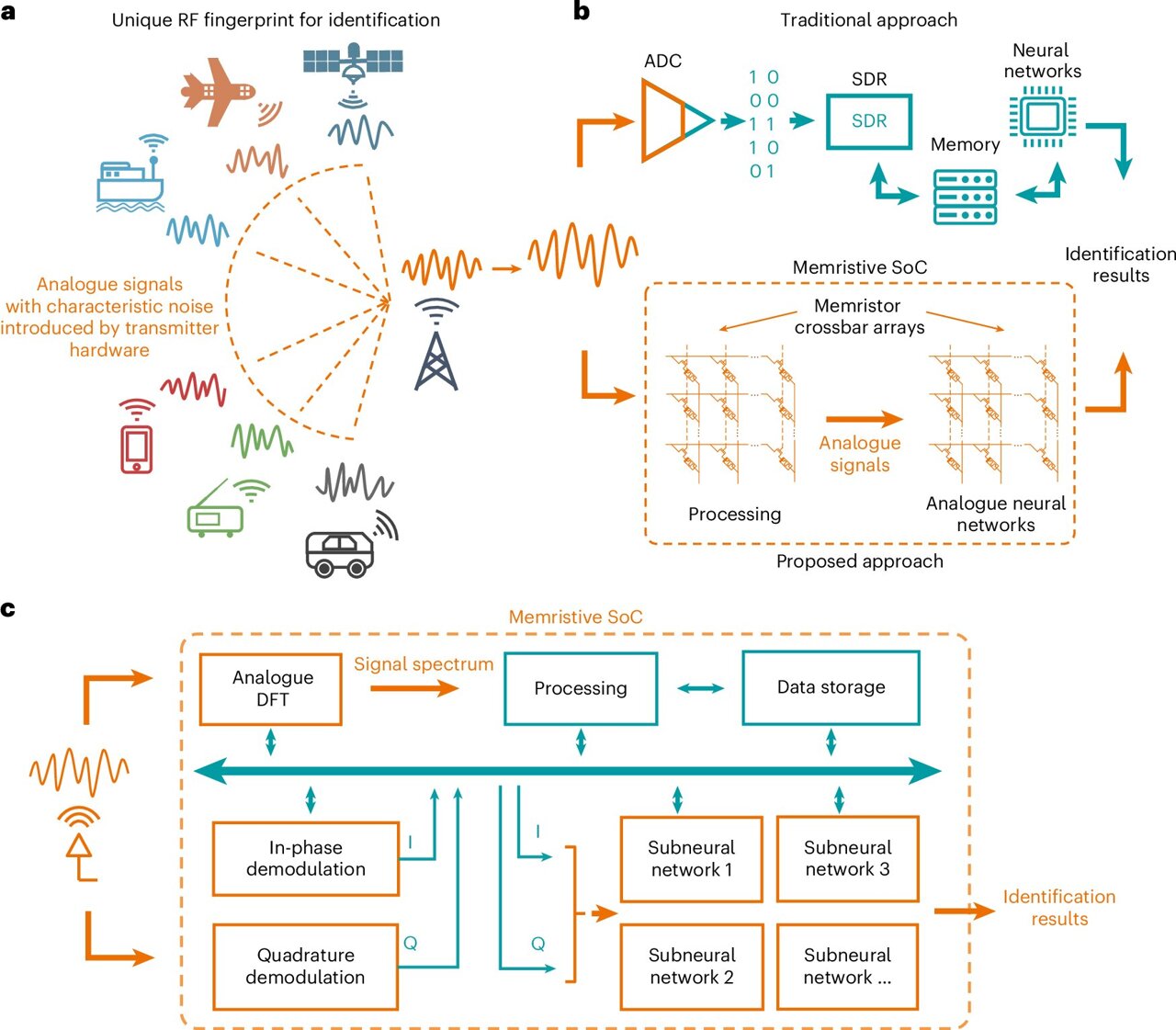Memristor System Enhances Radiofrequency Signal Processing

Advancements in Wireless Communication Through Analog Signal Processing
The evolution of wireless communication has been significantly influenced by the development of more advanced technologies for processing radiofrequency signals. These innovations promise to enhance the speed at which devices connected to the internet can share information while simultaneously reducing energy consumption. Currently, radiofrequency signals are processed using software-defined radios (SDRs), systems that use software rather than hardware components to modulate, filter, and analyze signals.
Despite their widespread use, SDRs rely on digital hardware where computing and memory modules are physically separated. This separation leads to constant data movement between the two, resulting in increased energy consumption. Additionally, the use of analog-to-digital converters (ADCs) often causes processing delays and substantial energy usage. Engineers have been exploring alternative systems that can manipulate signals in their original analog form, aiming to reduce data movement and lower energy consumption.
Researchers from the University of Massachusetts Amherst, Texas A&M University, and TetraMem Inc. have introduced a promising new system for processing analog radiofrequency signals. Their approach utilizes non-volatile memory devices called memristors integrated on a chip. The proposed system, detailed in a paper published in Nature Electronics, processes radiofrequency signals faster and more efficiently than existing SDRs.
"This work was inspired by the brain's method of processing sensory signals for information extraction," the authors explained. "Unlike state-of-the-art microelectronic sensors, which convert analog signals into digital bits for later processing, the brain processes analog signals directly in real time within memory, retaining only persistent information. This enables the brain to quickly extract critical information with minimal energy consumption."
As part of their study, the researchers developed a memristive system-on-a-chip (SoC), an integrated circuit containing all essential components of a computing system along with memristors. This SoC is designed to emulate the human brain's ability to process and rapidly extract important information.
The integrated circuit features a crossbar array of memristors, a circuit architecture that connects inputs and outputs in a grid-like structure. This array can process real-time sensory signals, with its configuration reflecting the weights of a customized AI algorithm.
"The memristive SoC is the result of over a decade of dedicated research into emerging AI hardware," the authors noted. "Our journey spans from developing high-performance memristors to designing integrated chips compatible with commercial foundries, and ultimately, to commercializing memristive hardware for next-generation AI and communications. The SoC demonstrated processing speeds and energy efficiencies orders of magnitude superior to conventional sensor-processing chips."
The new integrated circuit processes analog signals stored by memristors, extracting embedded information and reliably classifying important signals, similar to how the brain extracts valuable information. The team evaluated the memristive SoC in various tests and found it could process radiofrequency signals with low latency and minimal power consumption.
"This approach enables ultra-low-latency and energy-efficient signal processing directly on edge devices," the authors stated. "The RF signal processing architecture distributes both signal processing and neural network inference tasks across ten computing cores, supported by fully integrated on-chip peripheral circuitry."
They demonstrated the system's capabilities through high-accuracy RF transmitter identification and anomaly detection, achieving significantly lower latency and higher energy efficiency compared to state-of-the-art digital signal processing platforms.
The newly developed memristive SoC integrates AI directly into wireless communication, leveraging the unique properties of memristors. In the future, its design could inspire the creation of other similar memristor-based integrated circuits, potentially contributing to faster and more energy-efficient wireless communication systems.
"The system introduced in our recent paper is a proof of concept, yet it is a fundamental first step," the authors added. "We are currently developing our next-generation scaled-up memristive system and advanced RF circuits to support higher frequencies and expanded functionalities."
Their goal is to integrate their emerging hardware with existing Wi-Fi standards and future sixth-generation (6G) networks, enabling embedded AI to perform more efficient, adaptive RF signal processing in increasingly dynamic and complex wireless environments.